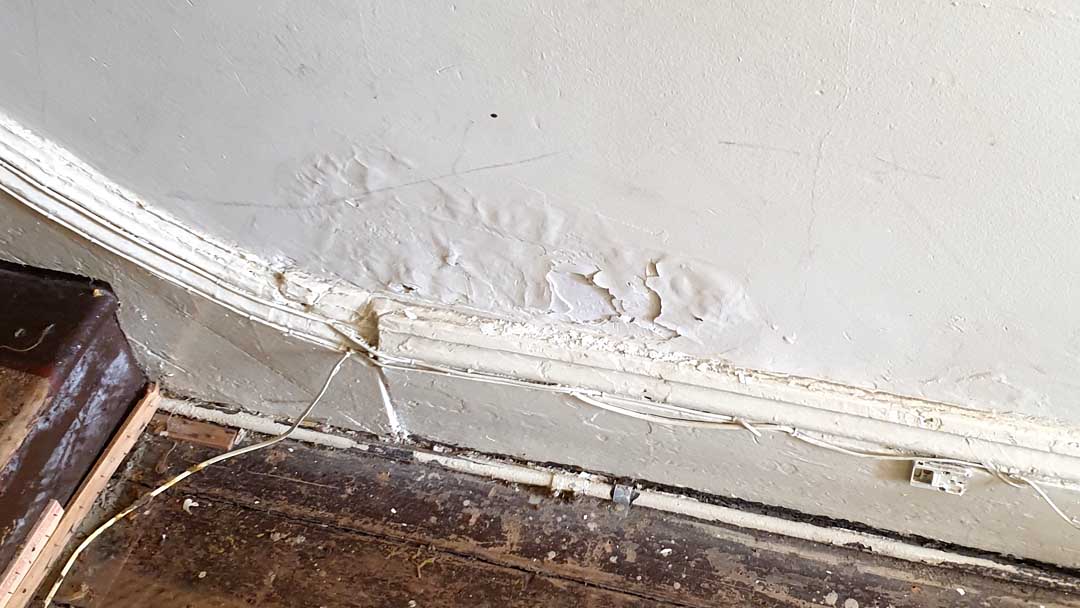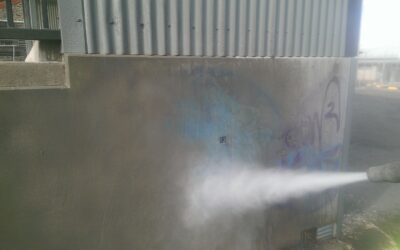5 Reasons Why Paint Bubbles Or Peels

Let’s face it, ugly bubbling or peeling paint can turn a beautiful home into an eyesore. If it happens on interior walls or the ceiling, it can even trigger health concerns for the residents. Blistering or peeling paint also considerably reduces the attraction of your home.
Paint can begin to blister, peel or crack a couple of days to a number of years after applying a new coat of paint. It is generally common on plaster or ceilings, but wooden frames, trims, decks and bathrooms can be affected too.
Why is my paint bubbling or peeling?
Bubbling or peeling paint strikes when there is a failure of adhesion between the paint and the surface it’s applied on. Here are five main causes for paint to bubble or peel.
1. Water
Water is the key cause of peeling paint on ceilings and bathroom walls, as well as exterior walls. When water saturates through the coats of paint, it makes the layers detach from the surface. This develops into bubbling or peeling paint.


2. High humidity
Inadequately ventilated houses can create high humidity and extreme condensation, causing peeling paint. High humidity triggers moisture build-up on walls leading to bubbling of the layers. This results in peeling layers of paint.
3. Preparation
So paint adheres properly, the surface must be sufficiently prepared. All surfaces must be cleaned, given a sand or primed before applying paint. If the paint is applied to a surface that is not primed or there is an uneven surface, it will bubble or peel.

4. High temperature
Paint doesn’t stick well to surfaces with temperatures over the typical atmospheric range. High temperatures can make the paint dry faster, stopping the layers from developing a strong bond. Dulux recommend exterior paints be stripped back to remove the blistering before you commence painting.
5. Compatibility
Some materials contain ingredients that react with paints. New wood produces natural oils that stop paint adhesion. Glossy or smooth surfaces can’t develop a systematic adhesion with the paint so layers applied will peel off.

How to fix bubbling or peeling paint
Below is how to fix bubbled paint and stop paint peeling. Fortunately, bubbling or peeling paint on your ceilings and walls can be fixed! This involves removing the old coats and applying a new one correctly. Make sure you wear a suitable safety mask, eye protection and clothing.


1. Prepare
Preparation is the key to stop paint bubbling or peeling. Remove all furniture or carpet from the room and protect the floor with a drop cloth or rag. Conceal the edges of windows and doors with masking tape to protect them.
2. Removal
Use a wire brush or paint scraper to remove the old coat of paint. You can use a putty knife on resilient areas to remove old paint.
3. Surface
Repair any holes or cracks on all surfaces, making sure you smooth any uneven areas with fine sandpaper. Make sure to clean the area with a damp rag to remove any dirt from the surface.
4. Prime
Select the correct primer for the type of paint you are about to apply. Prime the surface to allow the top coat of paint to adhere.
5. Paint
Begin painting. You might need to apply several layers of paint to get the effect you want. Make sure you read the directions on the can so your paint looks just as you want it to.
If you are searching for a trusted painter in Melbourne, then give us a call on (03) 8804 5840 to arrange an onsite inspection. If your have a surface where the paint bubbles or peels, give us a call. Alternatively, complete the contact form and we’ll get back to you shortly.



